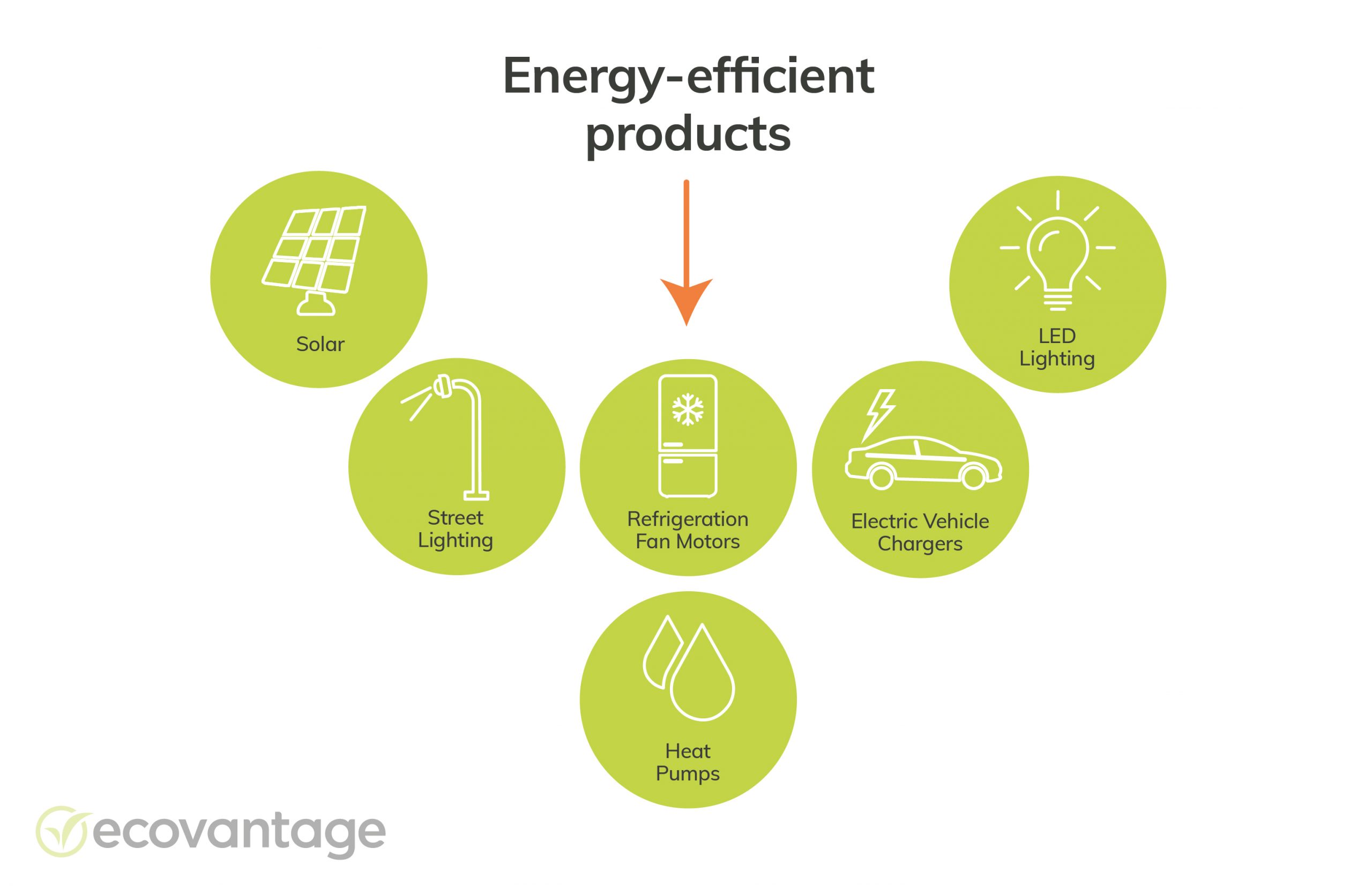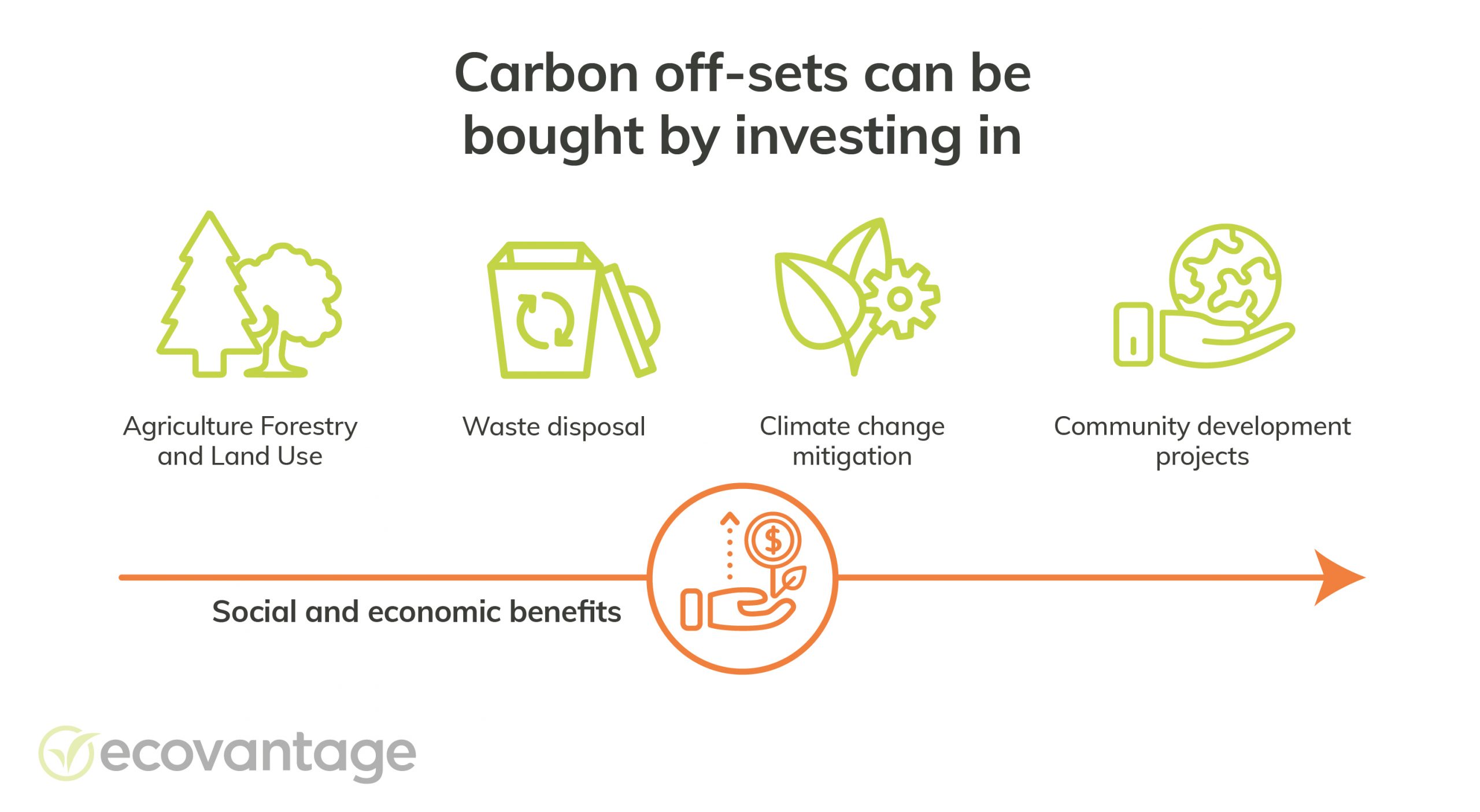Addressing climate change is a collective responsibility and when it comes to carbon neutrality, homes play a huge part. Not only does it help the environment but it can help you save thousands of dollars each year. At Ecovantage, we have energy-efficiency experts who can customise your switch to energy efficiency technologies to best suit your home’s needs and your budget.
What Is Carbon Neutrality?
Driving a car, catching a train, using energy from the grid, putting food waste in landfill and consuming most foods all contribute to the amount of carbon emitted into the atmosphere. Other actions like planting a tree or substituting solar or wind energy for coal or gas, all work to reduce, avoid, or remove emissions emitted into the atmosphere.
Household carbon neutrality is where we look to balance the carbon we emit by determining a household’s current carbon footprint and then working to improve energy efficiency including implementing renewable energy. Once we have measured and worked to reduce emissions we then purchase carbon offsets for any remaining emissions in order to balance our emissions back to neutral.


What are the Steps to Carbon Neutrality?
The first step toward carbon neutrality for a home, beyond calculating the current emissions footprint, logically involves reducing the greenhouse emissions produced from each household activity. This may be through simple actions such as behaviour changes (turning off lights when you’re not using them) or through the retrofitting to energy-efficient technologies, like replacing halogen lights for LED or swapping out an old hot water service for a highly efficient heat pump. These technology upgrades can reduce energy consumption for lighting and water heating by up to 80% in both cases, sometimes even more. This, in turn, reduces your household’s energy consumption and bill as well as your household emissions.
The next step would be to consider the household’s suitability for the installation of solar panels, which can be used to dramatically curb the household’s grid electricity consumption. With battery technology, it is possible for households to completely eliminate their need to draw power from the grid and provide your home with renewable energy. With the ownership of Electric Vehicles on the rise, some households will also use the energy they generate on their own roof to completely or partially power their vehicle, further reducing their carbon footprint.
Where the installation of solar is not possible or limited, in the case of apartments or other challenging scenarios, the household has the option to purchase Green Power, which is grid energy generated through renewable sources.
As a final step, if there are any carbon emissions that the household is generating that cannot be avoided or reduced, there is the option to purchase accredited carbon offsets. Carbon offsets are created through various projects including renewable and decarbonisation projects which are regulated under various programs. Offsets can be purchased and surrendered to essentially counterbalance carbon emitted that cannot otherwise be avoided.
Why Work Towards Carbon Neutrality?
Climate change impacts are being exacerbated globally with increasing emissions and about 20% of Australia’s emissions are created in our homes. It’s our global responsibility to look after the environment and ensure our emissions footprint is minimised as much as possible to prevent future changes. There are a range of steps that your household can begin to take on this journey including both short term and long term opportunities.
Working towards becoming Carbon Neutral with your energy consumption is a great first step. By implementing energy efficiency technologies we reduce our emissions impact. As you continue to reduce your energy consumption you will further reduce your carbon footprint and reliance on offsets over time.
Whilst energy use is not the only source of greenhouse gas emissions from a household, there are also transport, waste, consumption of products that are not carbon neutral, energy use is one of the easiest ways we can reduce our impact. We can, through undertaking energy efficiency and energy saving activities, save hundreds or even thousands of dollars each year in the home while reducing our carbon footprint.
How Is It Done?
An independent emissions assessor calculates the energy consumption of your home including which appliances use the most energy.
Ecovantage then works with you and your home’s needs to determine a bespoke approach that can help you save money without compromising on your creature comforts.
Once we know how your home is consuming energy, we can support you through upgrading your appliances to more energy efficient ones. For example, by installing new and more energy efficient appliances and monitors, you’ll be able to minimise the energy you use and better keep track of your home’s usage.
Examples of new appliances are
- Energy-saving LED lighting
- Solar panels
- Heat pump hot water
- Air conditioners
- Insulation
- Door and weather seals
- In-home displays
- And more!
By implementing more energy-efficient technology in your home you will use less electricity or natural gas and this, in turn, will reduce your carbon footprint.
In the case that your carbon footprint cannot be reduced to zero by energy efficiency or solar alone, there are options to purchase carbon offsets to bring your balance back to neutral. Through time as you implement more energy-efficient technologies, you can reduce your reliance on carbon offsets.


What are Carbon Offsets?
Offsets are created from initiatives that avoid, reduce or remove greenhouse gas emissions from the atmosphere. Some examples include: financing reforestation, renewable energy, or projects that involve the destruction of certain industrial gases; and projects that involve the capture and destruction of methane from landfills. For every tonne of carbon dioxide equivalent that is avoided, reduced, or removed from these projects, a carbon offset can be created.
Australian Carbon Credit Units (ACCUs) are carbon offsets that can be used to offset your energy usage. These credits are created through the Emission Reduction Fund, administered by the Commonwealth Government. Projects must be registered under an approved methodology, meet stringent requirements, and are verified by external auditors.
Once your home’s energy usage has been calculated and energy-efficient appliances have replaced your old ones, we are able to organise the purchase of offsets to neutralise your remaining carbon footprint.
Carbon Credits / Energy Efficiency Certificates.
Credits are created when certain energy efficiency activities are undertaken in homes or businesses.
Accredited Certificate Providers, like Ecovantage, calculate the amount of energy that would have otherwise been used had the energy efficiency upgrade not been implemented and determine an equivalent number of credits (or certificates) to represent this reduction or saving of energy.
Most certificates are traded on an open market, much like a stock market, by an accredited partner such as Ecovantage. Large energy retailers have obligations in many states of Australia to purchase and surrender a certain volume of certificates each year to help offset the emissions that grid energy contribute into the atmosphere. These retailers, other buyers and sellers in the market, the volume of energy efficiency upgrades being undertaken and other factors drive supply and demand of certificates and impact fluctuations in price over time.
The value of the certificates is often used to subsidise energy efficiency upgrades as a way to incentivise more households and businesses to reduce their carbon footprint and improve energy productivity. These subsidies are either provided as an upfront discount or as a delayed cash benefit in some cases.


Interested In Making Your Home Carbon Neutral?
Hundreds of homes and businesses have taken action by becoming carbon neutral. Contact us today to find out how you can too!

 Victoria
Victoria




